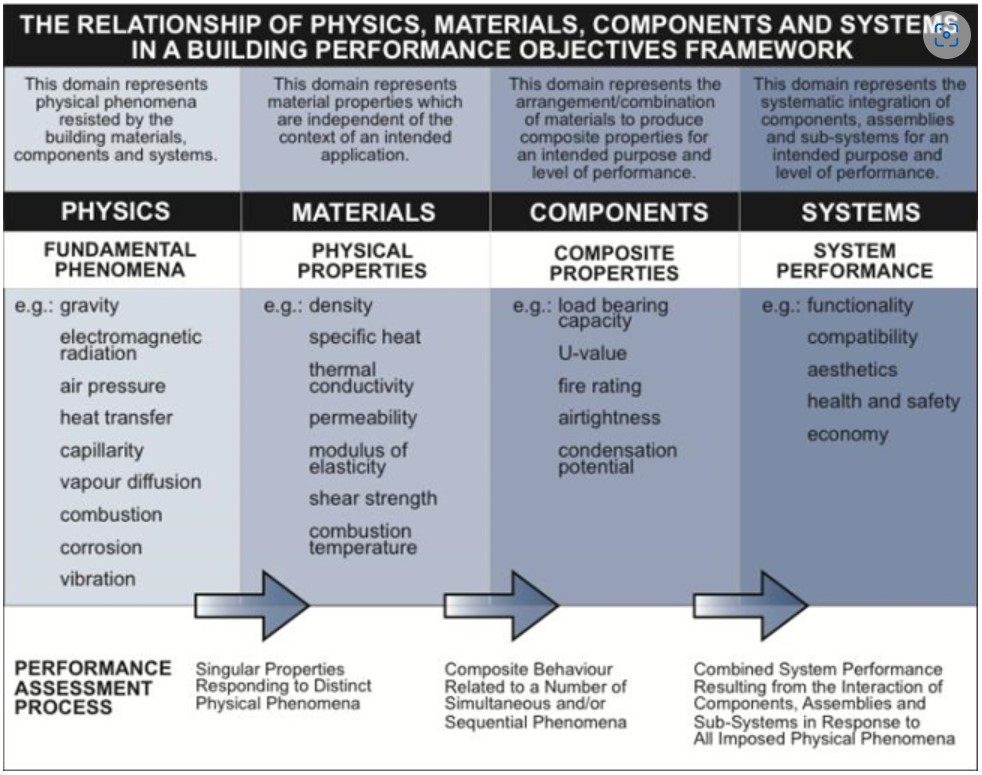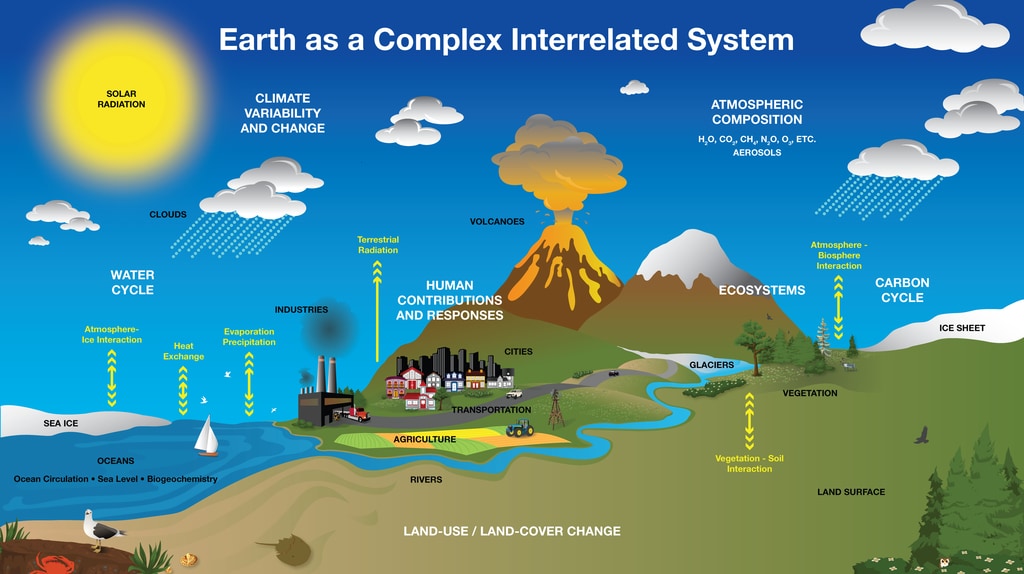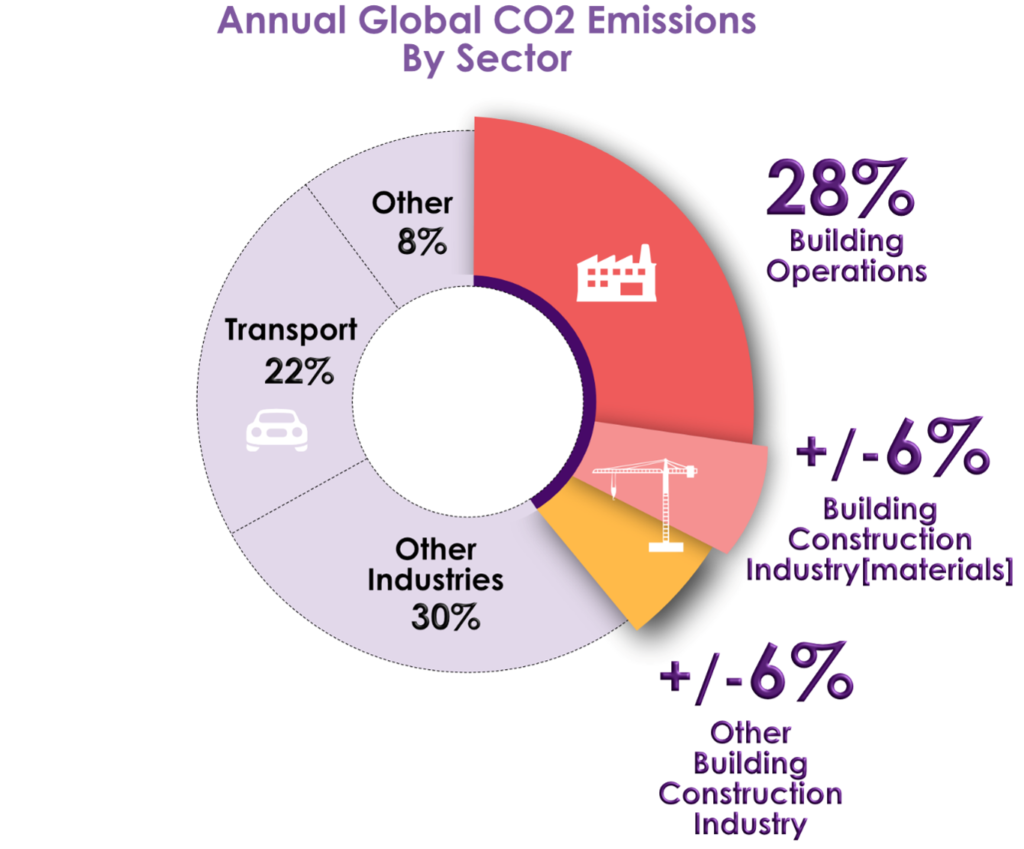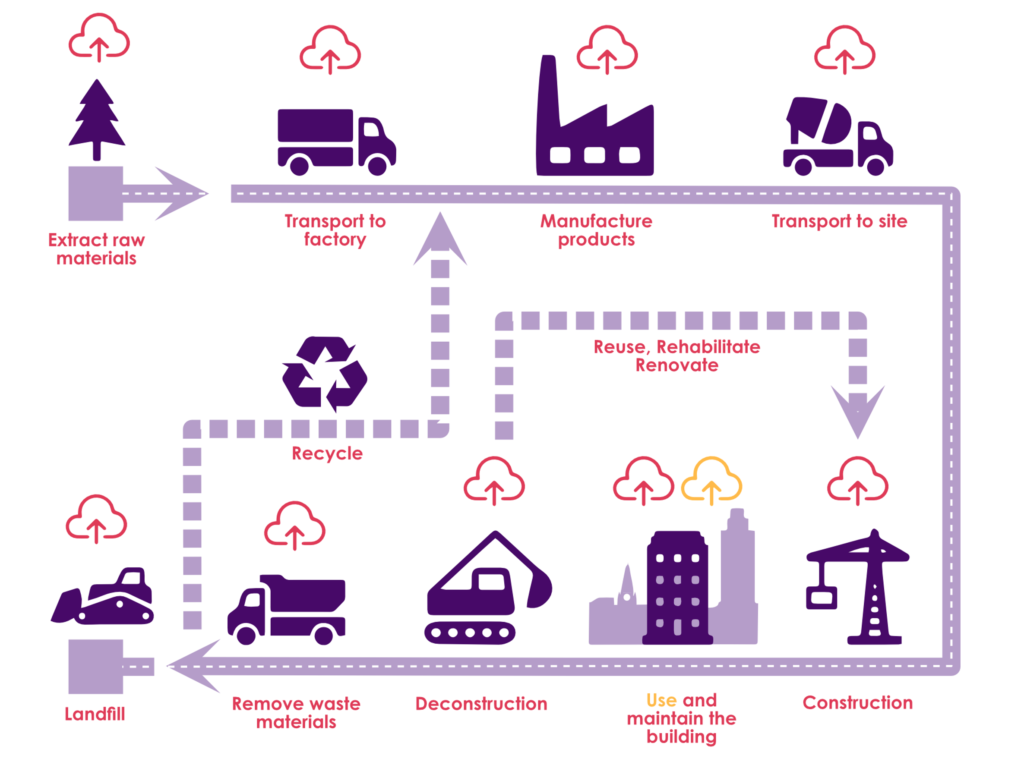As architects specializing in the sustainable retrofits of traditional and modern building, the TRACE team is well-versed in the concept of the “building as a system.” This approach requires a good understanding of the individual elements (ie. building envelope, building services, occupants, site, micro-climate, etc.) how they impact the entire system. The Whole Building Design Guide observes that while building scientists have made significant advances in modelling and developing the various individual elements, there have been relatively small improvements in handling all the combinations and complex interrelationships affecting the building performance as a whole.

Systems theory, at its fundamental level, is a belief that the world is made up of set(s) of interacting components, and that those sets of interacting components have properties, when viewed as a whole, that do not exist within any of the smaller units.
Allen 1996, in the Whole Building Design Guide
As complex as building systems are, they are nothing compared to what we know about our beautiful planet and all the diverse ecological, atmospheric, hydrological, geological, astronomical processes and systems that have worked together to sustain life. We can only estimate how many other elements are still to be discovered–let alone the countless complex interrelationships between each element and all their sub-systems. Just take a moment to marvel at the overwhelming beauty of it all.
Just like a thermostat helps to regulate the temperature of a building, our earth has many loops to keep things in balance, allowing it to recover from many extreme events . However, with enough stresses, especially when multiple system elements are simultaneously affected, the equilibrium can shift in a more dramatic way, such as changing the climate.
Unfortunately, we don’t have to look far to see the plethora of environmental issues: changing climate; pollution of the air, water and land; loss of wildlife habitat; loss of biodiversity; soil erosion; floods; droughts; materials/resource scarcity; landfill waste. But if we look a little deeper, we will see that most of these issues engage with and are deeply entwined in multiple elements of the earth’s multiple sub-systems, including social and economic dimensions. An inspiring film for Earth Day, The Boy Who Harnessed the Wind, illustrates the complex social and environmental factors leading to famine and uplifting true story of one innovative young man to rescue his village in Malawi.
Take heed of the danger of oversimplifying any complex problem by focusing on one area to the exclusion of others. The systems theory approach to buildings was born out of the large number of failures encountered when building designers attempted to innovate without applying building science principles. For example, increasing the airtightness of the building envelope will significantly improve energy efficiency, however, if not combined with adequate ventilation, this can lead to condensation, mould and “sick building syndrome.”

At a district scale, fuel-switching from natural gas to electricity is often touted as an easy way to meet greenhouse gas emissions regulations. However, if lots of poorly performing buildings are all doing this while simultaneously avoiding the more laborious energy efficiency upgrades, it can create a rather significant increase in electrical demand. When combined with an influx of electrical vehicles and the decommissioning of nuclear power plants, it becomes very clear in the context of a strained grid why those energy efficiency upgrades are so important It is far less expensive to conserve energy than to generate it, hence the many funding incentives for green retrofits!
At TRACE, we believe in embracing the complexity of a problem, because with a holistic understanding of buildings comes more impactful innovations to create good, meaningful progress in resolving some of the world’s greatest problems. This allows us to find the synergies, where a small number of interventions can build on each other to significantly improve multiple elements and optimize the overall system. This is precisely why we advocate for building reuse and retrofit. Compared to new construction, a focus on existing buildings can positively impact the following elements and sub-systems: resource extraction (reduced demand); land use (less sprawl); transportation/infrastructure (already in place); cultural heritage; sense of place; tourism; affordability of real estate; skilled job creation; circular economy, etc.

Architecture 2030 and the United Nation’s Global Alliance for Buildings and Construction report that buildings account for about 40% of carbon* emissions globally. However, architect and professor Lloyd Alter took a closer look at all the interconnections, including land use and transportation systems, to build a case that around 75% of emissions are tied to the built environment. Since the built environment is so intimately interconnected with so many of earth’s systems, this presents extraordinary opportunities for building professionals and allied disciplines to systematically create holistic solutions to a wide range of issues.

The term “carbon” is a reference to “carbon dioxide equivalent emissions” which is the unit of measure for global warming potential. The term “carbon” is sometimes also used as a shorthand for a much broader set of concepts including operational carbon and embodied carbon and related environmental impacts such as resource extraction, manufacturing, transportation, landfill waste, etc.) as well as greenhouse gas emissions associated with climate change. Taking another step back, there are plenty of other environmental issues requiring attention, including loss of biodiversity/overfishing, air/water pollution, loss of agricultural land, deforestation, heat island, poverty, famine, natural disasters, etc., many of which are interconnected to the built environment.
Rethinking Systems in the Built Environment Starts Here
- At the scale of an individual building, the Passive House approach to new construction and retrofits optimizes building performance by using 80-90% less energy for heating and cooling (operational carbon) than typical buildings, while also reducing maintenance costs and improving occupant health.
- Embodied carbon tools help designers optimize selection of building components, assemblies and materials to minimize life-cycle impacts
- Pakistani architect Yasmeen Lari uses local, low-carbon building materials to build resilient homes in areas devastated by natural disasters.
- Case studies of deep retrofits, including this 1968 Office Tower and TRACE’s own House of Commons Hall of State (SJAM Building) Adaptive Reuse and Addition.
- A recent TRACE Journal entry on affordable housing explores the often-overlooked link between poverty and environmental sustainability.
- Deconstruction Ordinances for historic homes are an important part of San Antonio’s strategies to preserve heritage value, embodied carbon and housing affordability while generating new economic opportunities for the salvage industry.
- Scientists are also improving the circular economy with a new “flash graphene” technology that upcycles industrial, plastic, and electronic waste into graphene – a substance similar to graphite with applications in clean energy generation, batteries, and lightweight, low-carbon concrete.
And the list goes on… History has proven that humans have incredible capacity for innovation and overcoming all kinds of major challenges. We have made huge strides in optimizing the various elements and are starting to leverage the interconnections within the web of the various systems. We hope that these examples provide hope and inspiration as we all work together to systematically care for our beautiful planet and all who dwell here today and in the future


